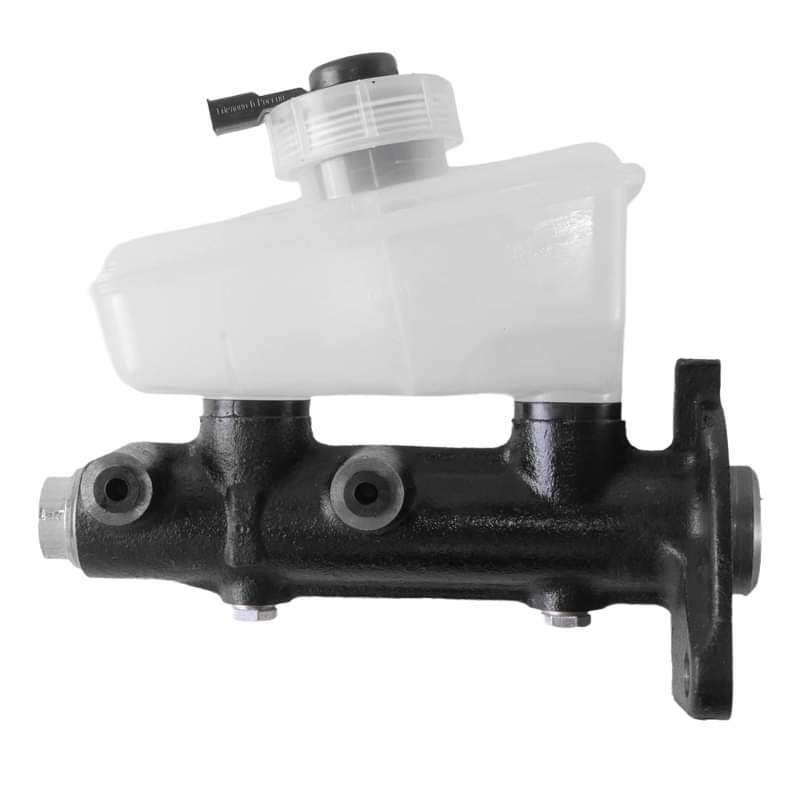The brake master cylinder is a critical component of a vehicle’s braking system, responsible for converting the force applied to the brake pedal into hydraulic pressure, which ultimately activates the brakes and slows down or stops the vehicle. While all brake master cylinders perform the same basic function, there are several different types available, each with its own unique design and features. Understanding the various types of car brake master cylinders can help you make informed decisions when it comes to maintenance, repair, or upgrading your vehicle’s braking system. Here’s a breakdown of some common types:
1. Single Cylinder Master Cylinder:
- A single cylinder master cylinder is the most basic and traditional type, consisting of a single chamber that supplies hydraulic pressure to all four wheels simultaneously. While simple in design, single cylinder master cylinders may lack the redundancy and safety features of more advanced types.
2. Dual Cylinder Master Cylinder:
- A dual cylinder master cylinder, also known as a dual circuit master cylinder, features two separate hydraulic circuits—one for the front brakes and one for the rear brakes. This design provides redundancy and safety in the event of a brake system failure, as one circuit can still operate independently if the other fails.
3. Tandem Master Cylinder:
- A tandem master cylinder is similar to a dual cylinder master cylinder but features two separate pistons within a single housing. Each piston operates a separate hydraulic circuit—one for the front brakes and one for the rear brakes. Tandem master cylinders are commonly found in modern vehicles and offer improved performance and safety compared to single cylinder master cylinders.
4. Power Brake Master Cylinder:
- A power brake master cylinder, also known as a vacuum-assisted master cylinder, incorporates a power booster or vacuum servo to amplify the force applied to the brake pedal. This design reduces the amount of effort required to engage the brakes and provides smoother and more responsive braking.
5. Integrated ABS Master Cylinder:
- An integrated ABS (anti-lock braking system) master cylinder is designed specifically for vehicles equipped with ABS. It features additional components and sensors to control the operation of the ABS system, which prevents wheel lock-up and improves vehicle stability during braking.
6. Manual Brake Master Cylinder:
- A manual brake master cylinder, also known as a non-power brake master cylinder, does not incorporate any power assistance or boosters. Instead, the driver must apply sufficient force to the brake pedal to engage the brakes. Manual brake master cylinders are commonly found in older vehicles or performance-oriented applications.
7. Remote Reservoir Master Cylinder:
- A remote reservoir master cylinder features a separate fluid reservoir that is connected to the main cylinder via a hydraulic line. This design allows for easier access to the fluid reservoir for inspection, maintenance, or topping up brake fluid levels.
8. Variable Bore Master Cylinder:
- A variable bore master cylinder features pistons of different sizes within the same housing, allowing for a variable hydraulic pressure output depending on the force applied to the brake pedal. This design provides more precise control over braking force and modulation.
Understanding the different types of car brake master cylinders can help you diagnose issues, select replacement parts, or upgrade your vehicle’s braking system to meet your specific needs and preferences. Whether you’re looking for improved safety, performance, or reliability, choosing the right master cylinder is essential for maintaining optimal braking performance and vehicle control. Always consult with a qualified mechanic or automotive technician for expert advice and assistance with brake system maintenance and repairs.











